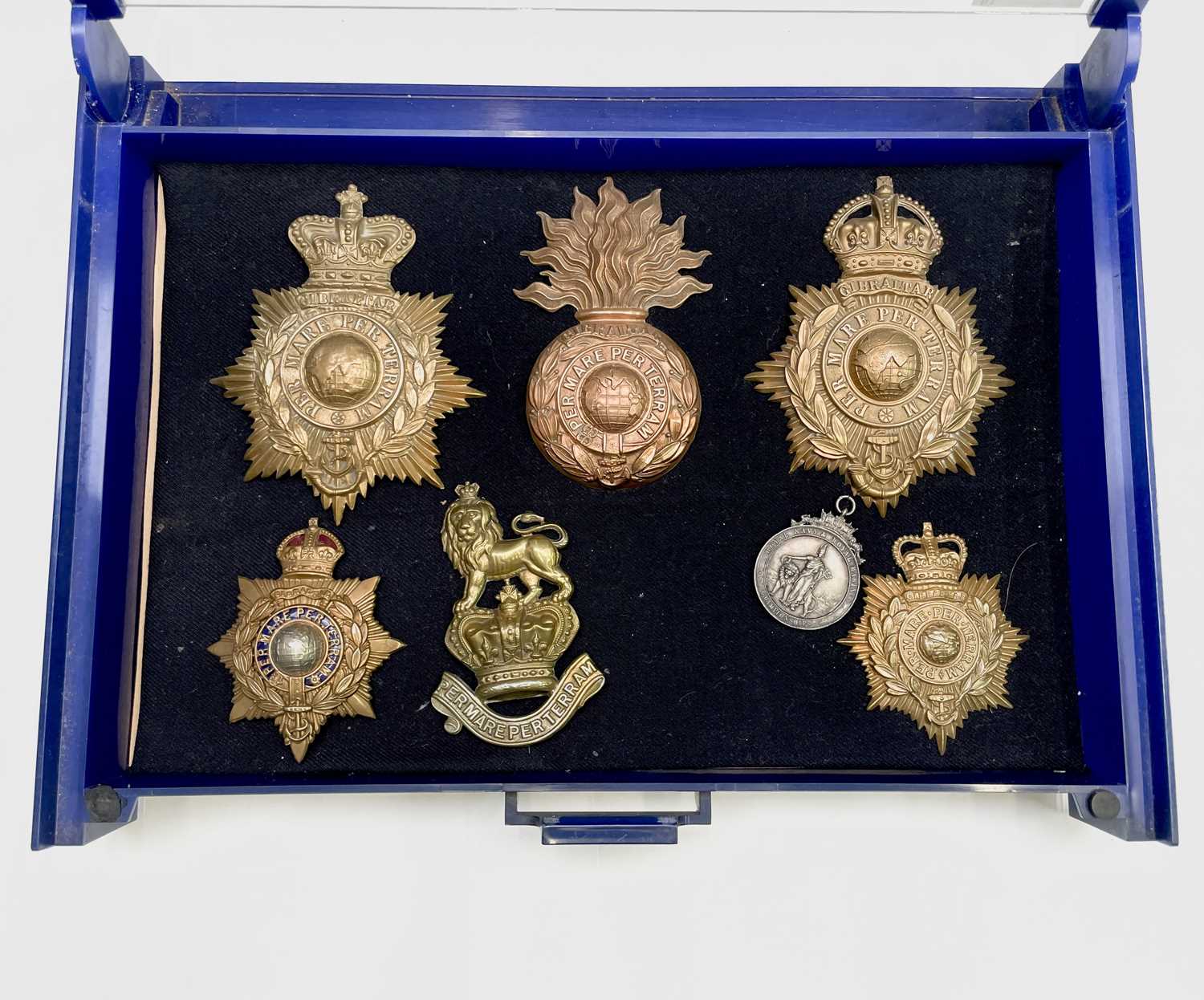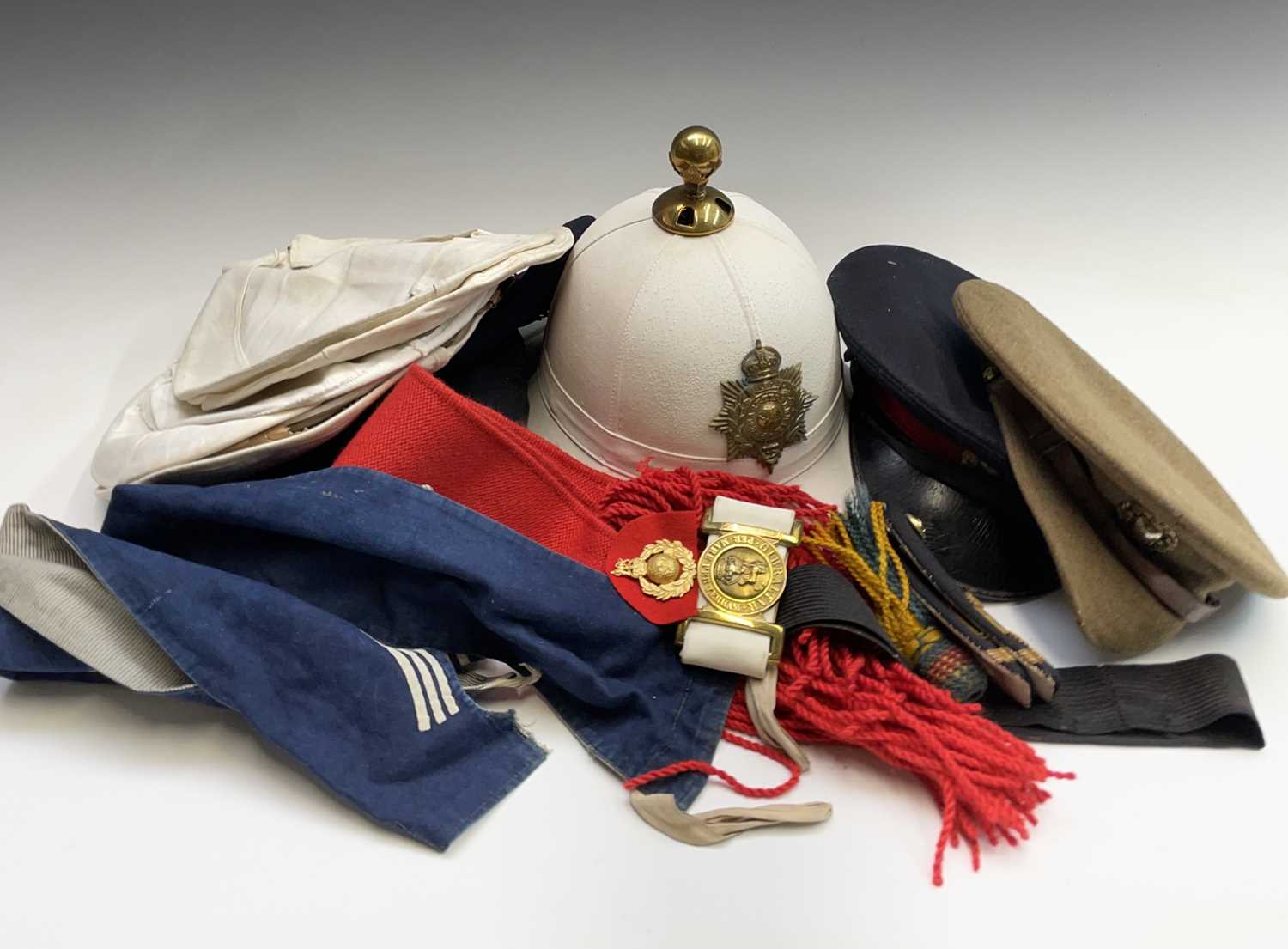(x) A 1951 Royal Marines M.S.M. group of seven awarded to Lieutenant (Quartermaster) A. S. Carn, Royal Marines 1914-15 Star (Ch.16725, Cpl. A. S. Carn, R.M.L.I.); British War and Victory Medals (Ch.16725 Sgt. A. S. Carn. R.M.L.I.); Defence and War Medals 1939-45; Royal Navy L.S. & G.C., G.V.R. (Ch.16725 A. S. Carn. Cr. Sgt. R.M.); Royal Marines Meritorious Service Medal, G.VI.R. (Ch. 16725 Q.M.S.I. A. S. Carn. 28.2.1951.), very fine (7) M.S.M. awarded February 1951. Alfred Samuel Carn was born on 25 April 1892 at Beccles, Suffolk, the son of Alfred and Emily Carn, the youngest of their five children. His father was manager of an insurance office. The family moved to London and in 1901 they were living in Tooting. On leaving school Alfred Carn worked as a grocer's assistant. Carn enlisted as a Private in the Royal Marine Light Infantry on 13 August 1910. He was five feet, nine inches tall, with dark brown hair, grey eyes and a dark complexion. After training at the recruit depot at Deal, he was assigned to the Chatham Division; throughout his service, he returned to this depot between his drafts at sea. In 1912 he served at sea for a few weeks in the battleships King Edward VII and Triumph. From January 1913-July 1914 he was part of the nucleus crew in the Ocean, an obsolete battleship assigned to the Reserve Fleet and stationed at Pembroke Dock in Wales. In July 1914 there was a practice mobilization of the fleet; this had been planned for some time but coincided with the crisis following the assassination of the Austrian Arch-Duke. Carn was transferred to the Magnificent; one of the nine Majestic class battleships completed in 1895. These were some of the oldest ships still in commission and were unsuitable for front-line service. The ship was first stationed in the Humber, as part of the short-lived 9th Battle Squadron; when the squadron was dissolved the following month she was sent to Scapa Flow for harbour defence duties. It must have been frustrating for a keen young man like Carn to be assigned to such obsolete ships which, clearly, would not see any action, at a time when several other ships had already taken part in victorious battles. In October 1914 Carn was promoted Corporal and on 23 November 1914 he was transferred to the Otway, an armed merchant cruiser (AMC). She was built as a liner for the Orient Steam Navigation Company of Glasgow and launched in 1909. She had a displacement of 12,077 tons, a speed of eighteen knots and carried 1,095 passengers. She had four sister ships which enabled the Orient Line to offer the travelling public guaranteed departures every other week for Australia and New Zealand. The Admiralty requisitioned her on 11 November 1914. She was converted for naval employment in a London shipyard, with eight 6-inch guns and two 6-pounders. As an AMC her company consisted of forty-five officers and 320 ratings. Of the officers, only the CO, Captain E.L. Booty MVO and three others were regulars, the rest came from the RNR. Otway was assigned to the 10th Cruiser Squadron. Most of the ships of this squadron were also armed merchant cruisers; they were almost constantly at sea, deployed in the stormy seas between the north of Scotland, Iceland and Norway where their role was to enforce the blockade of Germany. What this meant in practice was to prevent any German ships passing in either direction, and inspect all neutral vessels bound for Scandinavia or the Netherlands to ensure that they were not carrying any cargo destined for Germany. When a neutral ship was intercepted, the blockading ship ordered it to halt, then sent a small party consisting of an officer and three or four seamen or marines to board her. The officer would inspect the ship's papers, they might carry out a cursory inspection and, if nothing suspicious were found, the ship would be allowed to proceed. If contraband were detected, or if the officer were suspicious, a prize crew was put aboard and the ship was directed to proceed t
(x) A 1951 Royal Marines M.S.M. group of seven awarded to Lieutenant (Quartermaster) A. S. Carn, Royal Marines 1914-15 Star (Ch.16725, Cpl. A. S. Carn, R.M.L.I.); British War and Victory Medals (Ch.16725 Sgt. A. S. Carn. R.M.L.I.); Defence and War Medals 1939-45; Royal Navy L.S. & G.C., G.V.R. (Ch.16725 A. S. Carn. Cr. Sgt. R.M.); Royal Marines Meritorious Service Medal, G.VI.R. (Ch. 16725 Q.M.S.I. A. S. Carn. 28.2.1951.), very fine (7) M.S.M. awarded February 1951. Alfred Samuel Carn was born on 25 April 1892 at Beccles, Suffolk, the son of Alfred and Emily Carn, the youngest of their five children. His father was manager of an insurance office. The family moved to London and in 1901 they were living in Tooting. On leaving school Alfred Carn worked as a grocer's assistant. Carn enlisted as a Private in the Royal Marine Light Infantry on 13 August 1910. He was five feet, nine inches tall, with dark brown hair, grey eyes and a dark complexion. After training at the recruit depot at Deal, he was assigned to the Chatham Division; throughout his service, he returned to this depot between his drafts at sea. In 1912 he served at sea for a few weeks in the battleships King Edward VII and Triumph. From January 1913-July 1914 he was part of the nucleus crew in the Ocean, an obsolete battleship assigned to the Reserve Fleet and stationed at Pembroke Dock in Wales. In July 1914 there was a practice mobilization of the fleet; this had been planned for some time but coincided with the crisis following the assassination of the Austrian Arch-Duke. Carn was transferred to the Magnificent; one of the nine Majestic class battleships completed in 1895. These were some of the oldest ships still in commission and were unsuitable for front-line service. The ship was first stationed in the Humber, as part of the short-lived 9th Battle Squadron; when the squadron was dissolved the following month she was sent to Scapa Flow for harbour defence duties. It must have been frustrating for a keen young man like Carn to be assigned to such obsolete ships which, clearly, would not see any action, at a time when several other ships had already taken part in victorious battles. In October 1914 Carn was promoted Corporal and on 23 November 1914 he was transferred to the Otway, an armed merchant cruiser (AMC). She was built as a liner for the Orient Steam Navigation Company of Glasgow and launched in 1909. She had a displacement of 12,077 tons, a speed of eighteen knots and carried 1,095 passengers. She had four sister ships which enabled the Orient Line to offer the travelling public guaranteed departures every other week for Australia and New Zealand. The Admiralty requisitioned her on 11 November 1914. She was converted for naval employment in a London shipyard, with eight 6-inch guns and two 6-pounders. As an AMC her company consisted of forty-five officers and 320 ratings. Of the officers, only the CO, Captain E.L. Booty MVO and three others were regulars, the rest came from the RNR. Otway was assigned to the 10th Cruiser Squadron. Most of the ships of this squadron were also armed merchant cruisers; they were almost constantly at sea, deployed in the stormy seas between the north of Scotland, Iceland and Norway where their role was to enforce the blockade of Germany. What this meant in practice was to prevent any German ships passing in either direction, and inspect all neutral vessels bound for Scandinavia or the Netherlands to ensure that they were not carrying any cargo destined for Germany. When a neutral ship was intercepted, the blockading ship ordered it to halt, then sent a small party consisting of an officer and three or four seamen or marines to board her. The officer would inspect the ship's papers, they might carry out a cursory inspection and, if nothing suspicious were found, the ship would be allowed to proceed. If contraband were detected, or if the officer were suspicious, a prize crew was put aboard and the ship was directed to proceed t















Testen Sie LotSearch und seine Premium-Features 7 Tage - ohne Kosten!
Lassen Sie sich automatisch über neue Objekte in kommenden Auktionen benachrichtigen.
Suchauftrag anlegen